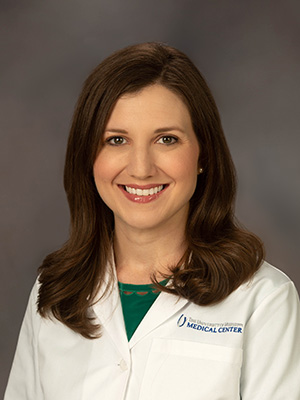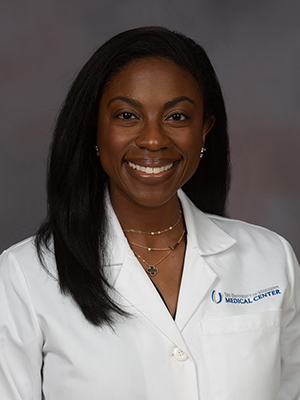Know the signs and risks of this potentially deadly condition
Blood clots kill, each year in the U.S. alone, more than the number of people who die from AIDS, breast cancer and motor vehicle crashes combined.
So, it may be surprising that so few people recognize their signs and symptoms: not even one in four.
As with any disease or disorder, awareness of this condition got a boost after it attacked someone famous: This summer, Tori Kelly, a Grammy Award-winning singer, collapsed and was hospitalized with blood clots in her legs, a condition also known as deep vein thrombosis.
Her age, reported as 30, should discredit any notion that blood clots are only an older person’s concern.

“Generally, the risk increases as you get older, but blood clots can affect anyone at any age,” said Dr. Carrie Wynn, assistant professor of medicine-hematology at the University of Mississippi Medical Center.
The numbers deserve everyone’s attention. An estimated 900,000 people in the U.S. are affected by blood clots each year. Between 100,000 to 300,000 people die, reports the National Blood Clot Alliance.
They’re not just in the legs, though. About 40 percent of blood clots occur in the lungs: pulmonary embolisms.

“You may have a clot in the deep veins of your legs [areas such as the thighs and calves] first and don’t know it, and it could break off and go to the lung,” said Dr. Keisha Bell Catchings, assistant professor of obstetrics-gynecology at UMMC.
“Since you need to breathe, a blood clot in the lung is absolutely even more life-threatening.” About 25 percent of people with clots in their lungs die suddenly, the Centers for Disease Control and Prevention estimates.
The danger mounts for anyone with a family history of blood clots or who has an autoimmune disorder, such as lupus and anti-phospholipid syndrome, Wynn said. Add to the risk list cancer, surgery, hospitalization, taking a long car or plane ride, smoking and obesity, Wynn said.
“Patients with sickle cell disease also have a higher risk.”
Pregnancy, too, is a major player. A clot that plugs the flow of blood in the vessels, a condition called thrombosis, is a threat during pregnancy, thanks to hormonal changes and uterine growth, Bell Catchings said. “Also, women during pregnancy may not be as mobile, and that can worsen the condition.
“But you are more likely to get a clot after pregnancy, not during or before. And a C-section increases the risk four-fold.
“At UMMC, if you have had a C-section, we recommend sequential compression devices.” These are inflatable sleeves that fit around the legs and are attached to a pump whose action improves blood flow.
“If you’re obese, with a BMI of 40 and above, and you had a C-section, we also put you on the anticoagulation [anti-blood clot] medicine,” Bell Catchings said.
“The risk of a blood clot is usually within four weeks, and up to six weeks, after you have the baby, but the greatest risk is within the first week.”
Also know that certain medications or procedures are blood-clot friendly. Those include birth control pills and hormonal replacement therapy, “particularly those that contain estrogen,” Wynn said.
“In fact, women who have migraines with aura generally should avoid birth control pills that contain estrogen, because this can increase their risk of stroke.”
Taking aspirin and ibuprofen, and other nonsteroidal anti-inflammatory drugs (NSAIDs), also can pose a threat, although a slight one, Wynn said.
“Tamoxifen, a medication commonly used for breast cancer, carries an increased risk of thrombosis, and we generally avoid this in women with a history of clots.”
What are the red flags? In the legs, and even the arms, “unusual swelling or pain in one arm or leg are the most common symptoms, but you can also experience redness, warmth and tingling,” Wynn said.
In the lungs: “Chest pain, shortness of breath, fast heart rate, coughing up blood, and dizziness,” Wynn said. “This can certainly be life-threatening and you should call 911 or go to the nearest emergency room if you are having these symptoms.”
What can you do? “Lose weight, stop smoking, maintain an active lifestyle: These are the best measures to prevent blood clots,” Wynn said.
Wearing compression hose or stockings may also help, Bell Catchings said.
“But, usually, people don’t know they have a clotting disorder. We don’t often get to prevention until you’ve had one before.
“If you have had a clot before, or if you have a known history of a clotting disorder and become pregnant, then we will prescribe anticoagulation medication.”
In severe cases, when medications don’t work, surgery can remove a blood clot from an artery or vein, a procedure known as a thrombectomy.
If you have concerns, who should you turn to? “Routine blood clots, such as those that occur after surgery, can be managed by your primary care provider,” Wynn said.
“Hematology usually gets involved if a clot is considered unprovoked, meaning there was no obvious reason for the patient to have had a blood clot.
“Depending on the situation, neurology, cardiology, pulmonology and/or ob-gyn may also be involved with treating blood clots.”
But there is no time to waste if you have such symptoms as chest pain, leg swelling or pain, pain that spreads, sudden weakness or numbness, a fast heartbeat and more.
“Then you should go directly to the ER,” Bell Catchings said, “or to your primary care physician – but only if you can get in right away.”
The above article appears in CONSULT, UMMC’s monthly e-newsletter sharing news about cutting-edge clinical and health science education advances and innovative biomedical research at the Medical Center and giving you tips and suggestions on how you and the people you love can live a healthier life. Click here and enter your email address to receive CONSULT free of charge. You may cancel at any time.



